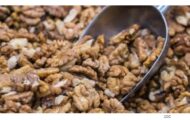The E. coli O157:H7 HUS outbreak linked to romaine lettuce that is plaguing the United States has moved to Canada, according to a Public Health Notice posted by the Public Health Agency of Canada. Six people in that country are sick with E. coli O57 infections with a “similar genetic fingerprint” to illnesses in the U.S.

Two of those sickened said they visited the U.S. before they got sick. Three people got sick in Canada, and information is pending for the fourth person. The notice states that the likely source of the outbreak in Canada is romaine lettuce from the Yuma growing regions in the U.S.
The case count in Canada is: British Columbia (1), Alberta (1), Saskatchewan (2), and Ontario (2). The patients got sick between late March and mid-April 2018. One of the Canadian cases was hospitalized. The patient age range is from 13 to 68 years.
Most of those sickened ate romaine lettuce at home or in prepared salads that were purchased at grocery stores, restaurants, and fast food chains. In the U.S., lawyers have filed lawsuits against Texas Road House, Panera, Papa Murphy’s, and Red Lobster.
The lettuce produced by that growing region in Arizona is no longer being grown and shipped, since the growing season is over. That does reduce the potential for exposure, since the lettuce has a shelf life of about 21 days, and the growing season ended in late March. The Yuma growing region includes parts of western Arizona and the Imperial Valley of southeastern California.
The notice states that all Canadians who are traveling to the U.S., or who shop for groceries across the border and purchase romaine lettuce in the U.S. should follow the CDC advice. That is, if you can’t be absolutely sure that the romaine lettuce you are buying did not come from the Yuma growing region, don’t buy it and don’t eat it.
To protect yourself and your family, be aware of outbreaks and recalls. Then make sure that you wash your hands well with soap and warm water for at least 20 seconds before you prepare food. Unwashed whole heads of lettuce should be cleaned. Start by discarding the outer leaves. Then rinse under fresh, cool tuning water. Rinse until all the dirt is washed away. Don’t soak lettuce in the sink, because there may be bacteria in the sink that can contaminate it. Store lettuce in the fridge up to 7 days. Discard when leaves become wilted or brown.

You can contact food safety attorney Fred Pritzker for help by calling 1-888-377-8900 or 612-338-0202.
Ready-to-eat lettuce products that are sold in sealed packages and labeled as “washed, pre-washed, or triple washed” do not need more cleaning. Follow the expiration date and refrigerate these products.
And know the symptoms of a Shiga toxin-producing E. coli infection and HUS. E. coli symptoms usually start within one to ten days after ingesting the bacteria, and include nausea, vomiting, headache, mild fever, severe and painful stomach cramps, and watery or bloody diarrhea. HUS symptoms begin a few days after E. coli symptoms, and include decreased urine output, lethargy, pallor, and easy bruising. If you or anyone in your family has been suffering with these symptoms, they should see a doctor.
In the U.S., 149 people in 29 states are sick in this outbreak. Sixty-four people have been hospitalized. Seventeen have developed hemolytic uremic syndrome, which is a type of kidney failure. And one person in California has died. This is the largest E. coli outbreak in the United States since 2006.




